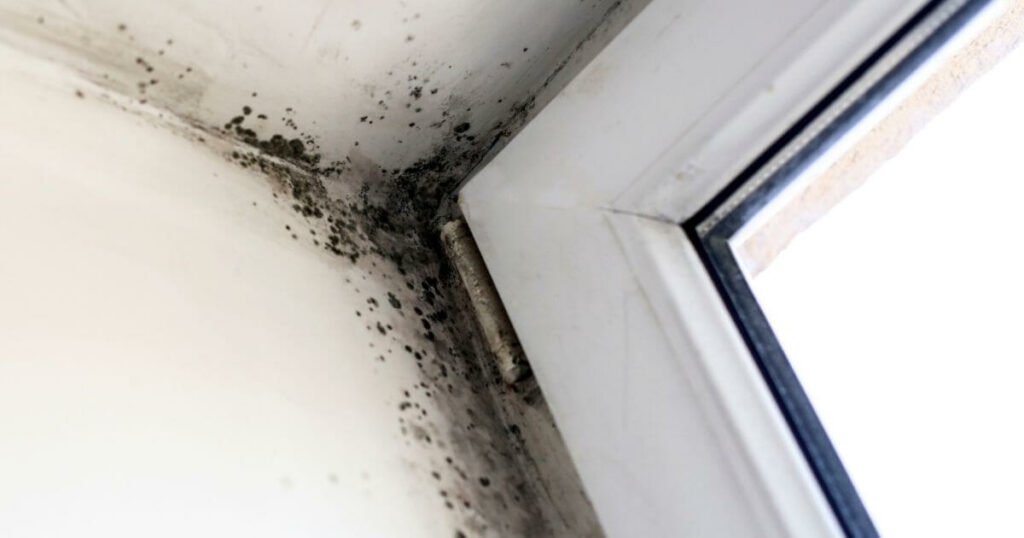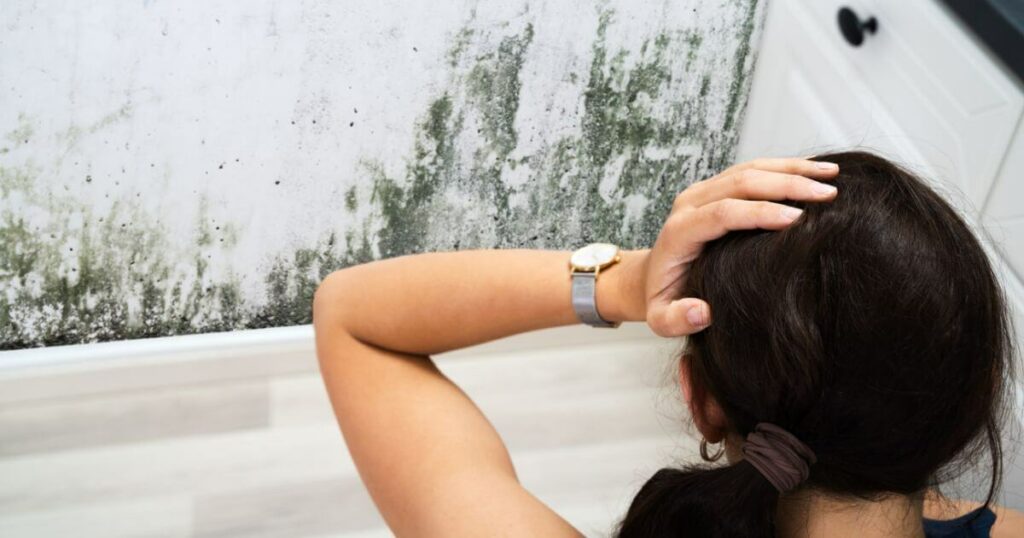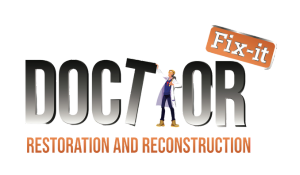Mold is a common issue that can affect indoor environments, often growing unnoticed until it becomes a significant problem. As a homeowner, it’s crucial to understand the potential health risks associated with mold exposure and the importance of prompt, professional remediation. At Doctor Fix-It, we specialize in mold inspection and remediation, ensuring your home is safe and healthy. In this article, we’ll explore the causes of mold growth, the signs to watch out for, and the comprehensive process of effective mold removal to ensure a safe and healthy living space. Trust Doctor Fix-It for thorough mold inspection and professional mold remediation to maintain a safe and healthy living space.
Causes of Mold Growth
Mold is a type of fungus that thrives in damp, humid conditions. It can grow on various surfaces and materials, feeding on organic matter such as wood, paper, and fabric. Several factors contribute to mold growth in indoor environments:
- Water leaks and intrusions: Leaky pipes, roofs, or windows can introduce moisture into your home, creating ideal conditions for mold growth.
- Flooding: Whether caused by natural disasters or plumbing issues, flooding can lead to extensive mold growth if not addressed promptly.
- High humidity levels: Excess humidity in your home, often due to poor ventilation or inadequate air circulation, can foster mold growth.
- Poor ventilation: Lack of proper ventilation in bathrooms, kitchens, and other moisture-prone areas can trap humidity and encourage mold growth.
- Condensation on cold surfaces: Cold surfaces like windows, walls, or pipes can attract condensation, leading to moisture accumulation and potential mold growth.
- Wet or water-damaged materials: Damp carpets, drywall, or insulation can become breeding grounds for mold if not dried or replaced promptly.
Identifying and addressing the root causes of mold growth is essential for preventing its recurrence and maintaining a healthy indoor environment.
Health Risks Associated with Mold Exposure
Exposure to mold can lead to various health problems, ranging from mild allergic reactions to more severe respiratory issues. Some of the common health risks associated with mold include:
Respiratory Issues
Mold spores are allergens and irritants that can trigger respiratory problems when inhaled. Exposure to mold can cause symptoms such as:
- Coughing
- Wheezing
- Throat irritation
- Nasal congestion
In individuals with pre-existing respiratory conditions like asthma, mold exposure can exacerbate symptoms and lead to more frequent or severe attacks.
Allergic Reactions
Mold is a common indoor allergen that can cause allergic reactions in sensitive individuals. These reactions can range from mild to severe, with symptoms including:
- Sneezing
- Runny or stuffy nose
- Itchy eyes, nose, or throat
- Skin rashes or hives
Prolonged exposure to mold can also lead to the development of new allergies, making it crucial to address mold issues promptly.
Immunological Responses
Mold exposure can impact the body’s immune system, making individuals more susceptible to infections. This is particularly concerning for people with compromised immune systems, such as those undergoing chemotherapy or living with chronic illnesses.
Aggravation of Pre-existing Conditions
For individuals with pre-existing health conditions, mold exposure can worsen symptoms and lead to a decline in overall health and quality of life. Some conditions that may be aggravated by mold include:
- Chronic respiratory illnesses (e.g., COPD, asthma)
- Allergies
- Skin conditions (e.g., eczema, psoriasis)
Toxic Mold and Mycotoxins
Certain mold species, such as Stachybotrys chartarum (often referred to as “black mold”), can produce toxic byproducts called mycotoxins. While not all molds are toxic, exposure to mycotoxins can lead to more severe health effects, particularly with prolonged exposure.
It’s essential to have suspected toxic mold professionally identified and removed to minimize health risks.

Recognizing Mold in Your Home
Identifying the presence of mold in your home is the first step in addressing the issue. Here are some signs to watch out for:
Visible Signs
- Visible mold growth in various colors (black, green, brown, or white) and textures (fuzzy, slimy, or powdery)
- Water stains, discoloration, or peeling paint on walls and ceilings
- Bulging or warping of materials due to moisture accumulation
Odors and Musty Smells
- A distinct, musty odor, even in the absence of visible mold growth
- Persistent dampness or earthy smells
Health Symptoms
- Unexplained allergic or respiratory symptoms that improve when away from home
- Recurring health issues among occupants, especially those with pre-existing conditions
High Humidity and Moisture
- Consistently high indoor humidity levels (above 60%)
- Condensation on windows, walls, or cold surfaces
- Presence of water leaks, flooding, or past water damage incidents
If you suspect mold growth in your home, it’s crucial to have a professional inspection and assessment to determine the extent of the problem and develop an effective remediation plan.
The Mold Remediation Process
Mold remediation is a comprehensive process that involves identifying, containing, and removing mold growth while addressing the underlying moisture issues. Here’s an overview of the steps involved:
Inspection and Assessment
- Thorough inspection of the affected areas by certified professionals
- Identification of the extent of mold growth and moisture sources
- Development of a tailored remediation plan
Containment
- Implementation of containment measures to prevent mold spore dispersal
- Use of physical barriers, negative air pressure, and air scrubbers
- Isolation of contaminated areas during the removal process
Air Filtration
- Utilization of HEPA filters in air scrubbers to capture airborne mold spores
- Importance of proper filtration to ensure a safe environment
Removal of Mold-Infested Materials
- Safe removal and disposal of materials heavily contaminated with mold
- Adherence to industry best practices for handling and disposal
Cleaning and Disinfection
- Thorough cleaning and disinfection of non-porous surfaces and salvageable materials
- Use of appropriate antimicrobial agents to eliminate remaining mold spores
Drying and Dehumidification
- Complete drying of the affected areas to eliminate moisture
- Use of specialized equipment like dehumidifiers and air movers
- Importance of achieving proper moisture levels to prevent future mold growth
Post-Remediation Verification
- Final inspection to ensure successful mold removal and restoration
- Air quality testing to confirm acceptable mold spore levels
- Documentation of the remediation process for future reference
Preventive Measures
- Guidance on preventing future mold growth
- Addressing moisture sources, improving ventilation, and regular inspections
- Importance of maintaining a dry and well-ventilated environment

Mold Removal vs. Mold Remediation
It’s important to understand the difference between mold removal and mold remediation when addressing mold issues in your home.
Mold removal often refers to a superficial process that focuses on removing visible mold growth without addressing the underlying causes or preventing future growth. This approach may provide temporary relief but does not offer a long-term solution.
On the other hand, mold remediation is a comprehensive approach that involves identifying and addressing the root causes of mold growth, containing and removing mold-infested materials, and implementing preventive measures to minimize the risk of recurrence. Professional mold remediation companies follow industry standards and best practices to ensure a thorough and effective process.
While DIY mold removal may seem like a cost-effective option, it can often lead to incomplete removal, improper handling of mold-infested materials, and potential health risks. Choosing professional remediation over DIY removal ensures that the job is done correctly, safely, and with a focus on long-term prevention.
Choosing a Professional Mold Remediation Company
When faced with a mold problem, selecting a reputable and experienced mold remediation company is crucial. Here are some factors to consider when choosing a remediation provider:
- Certifications and licenses: Look for companies with certified technicians (e.g., IICRC, ACAC) and appropriate licenses required by your state or local regulations.
- Experience and track record: Choose a company with a proven history of successful mold remediation projects and positive customer feedback.
- Insurance coverage: Ensure that the company carries adequate liability and workers’ compensation insurance to protect you in case of any accidents or damages during the remediation process.
- Detailed remediation plan and transparency: A reputable company will provide a detailed assessment, remediation plan, and transparent communication throughout the process.
- Customer reviews and references: Read customer reviews and ask for references to gauge the company’s reputation and quality of service.
Be cautious of companies that make unrealistic promises, pressure you into making quick decisions, or offer prices significantly lower than other providers. These can be red flags indicating a lack of expertise or questionable business practices.

Trust Doctor Fix It To Create a Mold-Free Home for Your Family’s wellbeing
Mold exposure can pose serious health risks, from allergic reactions to respiratory issues. Doctor Fix It understands the importance of prompt, professional mold remediation in maintaining a safe and healthy living environment. Their certified technicians thoroughly inspect affected areas, identify moisture sources, and develop tailored remediation plans. Using industry-standard practices, Doctor Fix It contains mold growth, removes contaminated materials, and implements preventive measures to minimize recurrence. They prioritize customer safety and satisfaction, offering transparent communication throughout the process. If you suspect mold in your home, don’t hesitate to contact Doctor Fix It for a comprehensive assessment and remediation plan. Trust their expertise to create a mold-free environment for you and your family.
FAQs
- What are the most common symptoms of mold exposure? Common symptoms of mold exposure include allergic reactions (sneezing, runny nose, itchy eyes), respiratory issues (coughing, wheezing, throat irritation), and skin irritation (rashes, hives).
- Can mold cause long-term health problems? Yes, prolonged exposure to mold can lead to chronic respiratory problems, allergies, and a weakened immune system. In some cases, exposure to toxic molds can cause more severe health effects.
- How can I tell if I have a mold problem in my home? Signs of a mold problem include visible mold growth, musty odors, moisture issues (water stains, condensation), and health symptoms that improve when away from home.
- Is it possible to remove mold myself, or do I need professional help? While small, isolated instances of mold growth may be handled with proper precautions, larger or more extensive mold problems should be addressed by professionals to ensure safe and effective removal.
- How long does the mold remediation process typically take? The duration of mold remediation depends on the extent of the mold growth and the size of the affected area. On average, the process can take anywhere from a few days to a week or more.
- Will mold come back after remediation? If the underlying moisture issues are properly addressed and preventive measures are implemented, the likelihood of mold returning is significantly reduced. However, it’s essential to maintain a dry and well-ventilated environment to prevent future growth.
- Is mold remediation covered by homeowners insurance? Coverage for mold remediation varies among insurance policies. Many policies offer limited coverage for mold damage caused by sudden and accidental water events (e.g., burst pipes). However, mold growth resulting from neglect or lack of maintenance may not be covered.
- Can I stay in my home during the mold remediation process? In many cases, you can remain in your home during mold remediation, as the affected areas will be contained and isolated. However, if the mold growth is extensive or if you have severe health sensitivities, your remediation professional may recommend temporary relocation for your safety and comfort.

